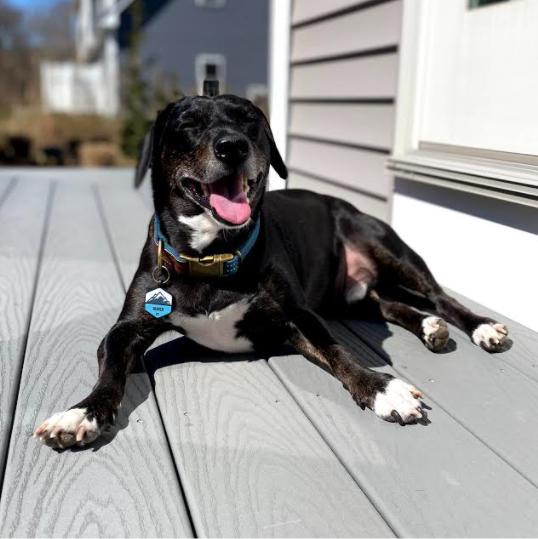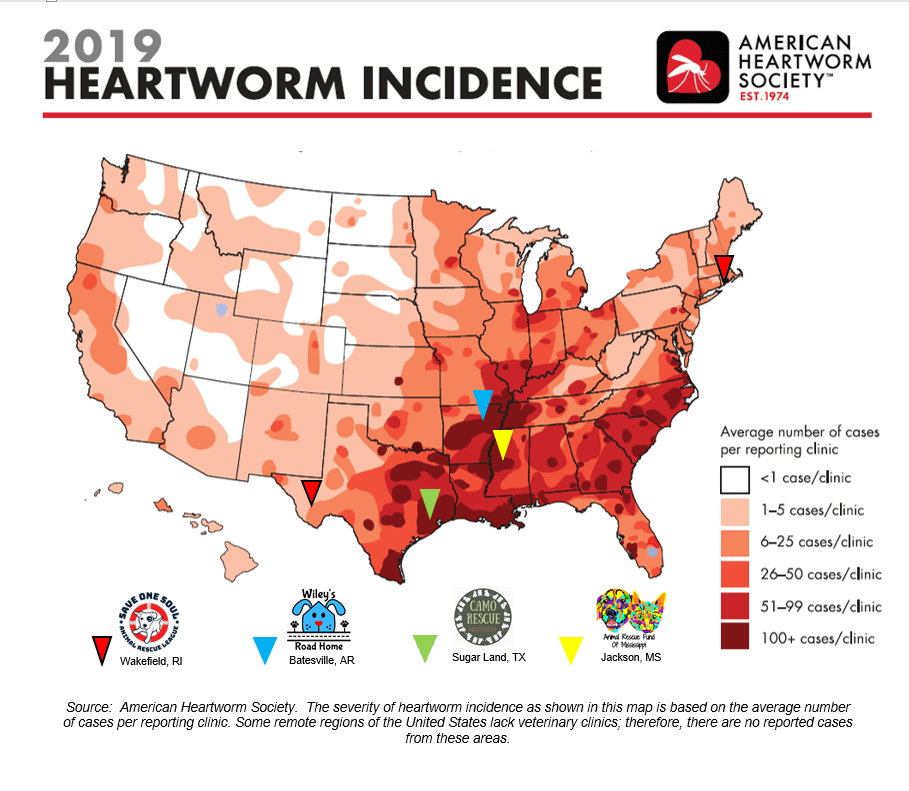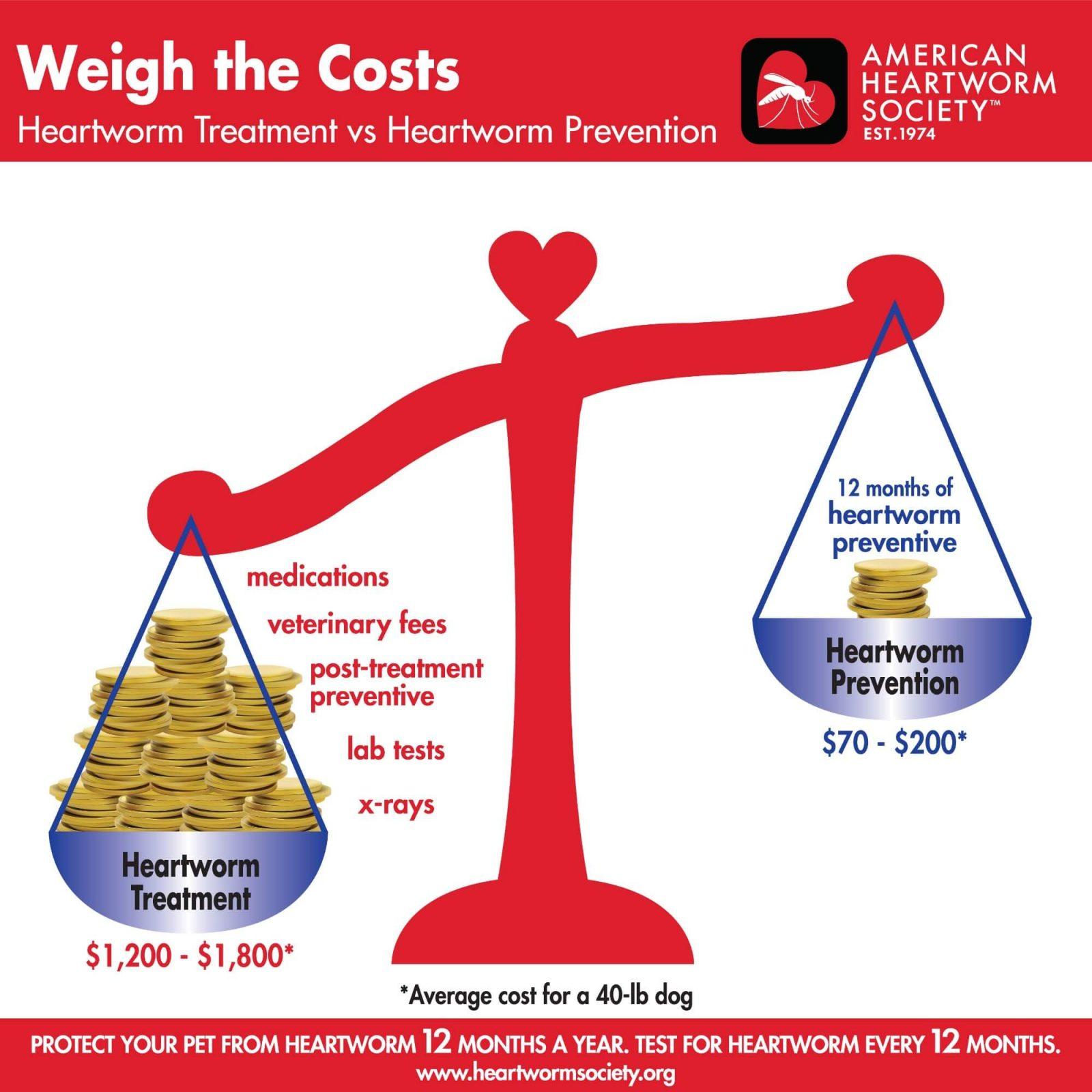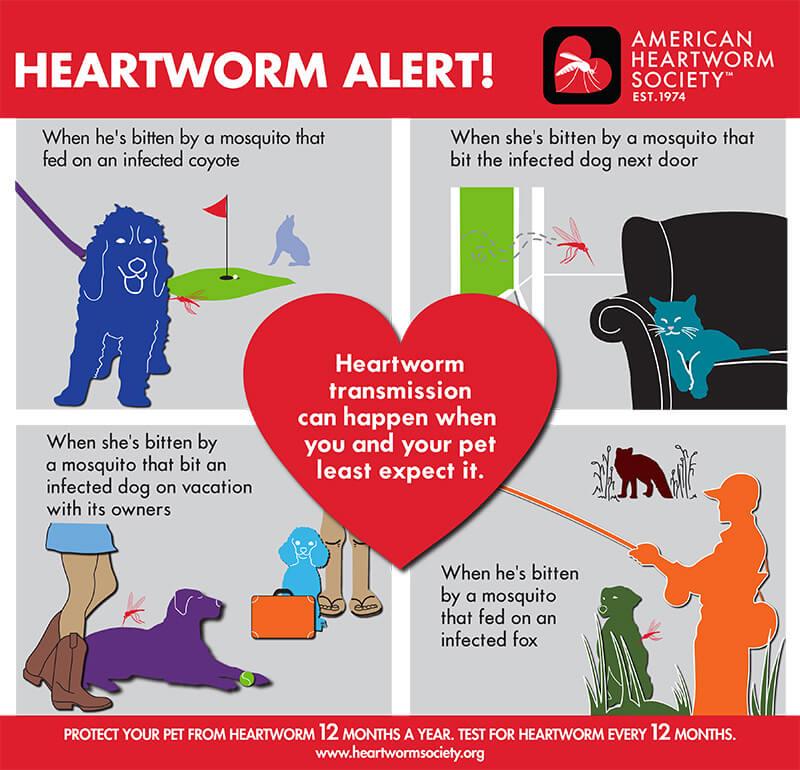Heartworm
Heartworm does not discriminate.
No matter what the season, or your location, the risk is higher than you think.
Heartworm disease is a serious and potentially fatal disease caused by foot-long worms (heartworms) that live in the heart, lungs and associated blood vessels of affected pets, causing severe lung disease, heart failure and damage to other organs in the body. This life-threatening, but preventable, disease affects over 1 million pets every year.
SOS partners with southern groups located in parts of the country where heartworm disease is endemic.
Each year, the SOS rescue network spends over $30,000 on preventatives to ensure that our dogs are protected from this silent killer, and nearly the same amount in treating the small but resource-intensive 3% of our dogs who test positive for heartworm disease. Some of these dogs test positive upon intake; others don’t test positive for several months, sometimes not until after placement into their adoptive homes. SOSARL is committed to getting each of these dogs the gold standard treatment as recommended by the American Heartworm Society, because when detected and treated early, most dogs will recover fully and go on to lead long, healthy lives as loving companions to their humans.
WANT TO HELP?
Heartworm treatment for a 40lb dog can cost upwards of $1200, not to mention the costs associated with the additional basic care resources needed during the six month treatment period. Our average adoption donation of $685 barely covers the basics for a healthy dog, let alone a dog who needs heartworm treatment. We are only able to help these dogs with your financial support!
- This covers the cost of heartworm preventative for one dog for one month. Make this a recurring donation to sponsor a longtimer foster dog for a full year!
- Covers the cost of heartworm preventative for the average length of stay in the SOS rescue network before adoption. Make this a recurring donation to sponsor 12 rescue dogs in one year!
- Covers the cost of one heartworm treatment shot for a small dog Make this a recurring donation to sponsor the shot costs to treat four dogs in a year!
Prevention is Key
Whether the preventive you choose is given as a pill, a spot-on topical medication or as an injection, all approved heartworm medications work by eliminating the immature (larval) stages of the heartworm parasite. This includes the infective heartworm larvae deposited by the mosquito as well as the following larval stage that develops inside the animal. Unfortunately, in as little as 51 days, heartworm larvae can molt into a juvenile/immature adult stage, which cannot be effectively eliminated by preventives. Because heartworms must be eliminated before they reach this adult stage, it is extremely important that heartworm preventives be administered strictly on schedule (monthly for oral and topical products and every 6 months or 12 months for the injectable). Administering prevention late can allow immature larvae to molt into the adult stage, which is poorly prevented.
The SOSARL Heart Pledge
 Preventatives are not 100% effective and there is also a 6-8 month latency period during which a dog could be infected and not yet testing positive. Dogs without a consistent/known history of preventative (like most rescue dogs) should always be tested prior to starting preventative and then always retested 6 months later. If positive at the six months test, the infection was most likely acquired before starting or resuming preventative therapy. To reduce this risk that our adopters face, SOS counsels all of our adopters to extend the recommended retest period to be six months after adoption (not after starting preventatives, which is done while in our care), and we offer financial assistance for heartworm treatment for SOS dogs who are kept on monthly heartworm preventative consistently (a contractual obligation of all SOS adopters) but still test positive for heartworm disease up to six months after adoption. While the number of dogs who convert to being heartworm positive after adoption placement is less than 0.5%, the physical (and financial) risk is real. Early detection and treatment is key to ensuring the most optimistic outcome.
Preventatives are not 100% effective and there is also a 6-8 month latency period during which a dog could be infected and not yet testing positive. Dogs without a consistent/known history of preventative (like most rescue dogs) should always be tested prior to starting preventative and then always retested 6 months later. If positive at the six months test, the infection was most likely acquired before starting or resuming preventative therapy. To reduce this risk that our adopters face, SOS counsels all of our adopters to extend the recommended retest period to be six months after adoption (not after starting preventatives, which is done while in our care), and we offer financial assistance for heartworm treatment for SOS dogs who are kept on monthly heartworm preventative consistently (a contractual obligation of all SOS adopters) but still test positive for heartworm disease up to six months after adoption. While the number of dogs who convert to being heartworm positive after adoption placement is less than 0.5%, the physical (and financial) risk is real. Early detection and treatment is key to ensuring the most optimistic outcome.
If your pet is not on year-long preventatives, or hasn’t been tested in the last year, please reach out to your vet to schedule an appointment. An ounce of prevention is truly worth more than a pound of cure in this case!
Success Stories


- This covers the cost of heartworm preventative for one dog for one month. Make this a recurring donation to sponsor a longtimer foster dog for a full year!
- Covers the cost of heartworm preventative for the average length of stay in the SOS rescue network before adoption. Make this a recurring donation to sponsor 12 rescue dogs in one year!
- Covers the cost of one heartworm treatment shot for a small dog Make this a recurring donation to sponsor the shot costs to treat four dogs in a year!



